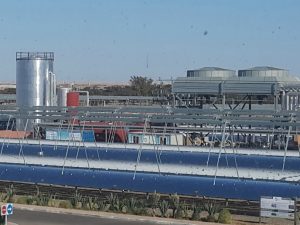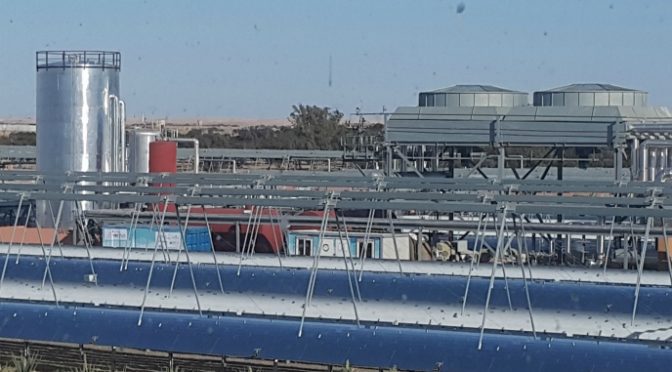Thermal energy storage (TES) systems can boost the conversion of solar thermal into electricity. They allow the efficient storage of heat during the day so that electricity production continues at night.
Currently, the expansion of small and midsized concentrated solar power plants is limited because of the shortage of tailor-made TES systems. TES plays a key role in making concentrating solar power systems more competitive than their photovoltaic equivalents. It allows adjusting the plant design and/or operation to different potential strategies. For example, to match consumer demand in isolated energy systems, or to maximise the electricity production for plants connected to the power distribution grid that can export electricity, thereby boosting revenues.

© ORC-PLUS
The EU-funded ORC-PLUS project addressed this challenge by exploring the suitability of employing organic Rankine cycle (ORC) systems as heat engines to produce electric energy in small concentrated solar power plants. In these applications, the ORC uses thermal energy harvested from the sun to evaporate its high molecular mass working fluid and generate electricity thanks to the expansion of the vapour in a turbine coupled to a generator. ”These systems are a good technological option because they’re highly reliable and can be implemented in remote locations, but an important technical limitation is their need for a constant heat supply,” says project coordinator Walter Gaggioli. “TES helps to overcome this shortcoming.”
24/7, on-demand electricity
After testing two different TES options and three prototypes, the ORC-PLUS team developed an innovative TES system optimised for midsized concentrated solar power plants. The system extends the power production of an existing solar thermal power plant in Morocco comprised of linear Fresnel collectors and a 1 MWe ORC power unit. The TES system boosts energy production by up to 4 hours during evening hours (18:00-22:00) for the plant located in Ben Guerir’s Green Energy Park, enabling it to cover the power peak loads of the local medium-voltage grid.
Improved power production offers many benefits
ORC-PLUS contributes to tackling several climate and energy challenges. “There’s huge potential for small- and medium-scale CSPs (1-10 MWe) to substitute expensive electro-diesel systems in rural on- and off-grid applications, hence reducing greenhouse gas emissions,” explains Gaggioli. “The dispatchable nature of the energy produced by ORC-PLUS is complementary to the less dispatchable energy produced by other renewable energy systems like photovoltaics and wind.” Dispatchable refers to the production of electricity on demand. “This makes the system a potentially strategic technology for complementing other renewables and targeting a high overall percentage of renewables in the global energy supply,” Gaggioli says. The ORC-PLUS plant will be commissioned in late-2020, creating jobs and revitalising local industries along the way. The technical solution developed improves the annual average efficiency of solar heat-to-electricity transformation by up to 20 %. Overall, the project reduced the payback time by 30 %, down to 8 years, thus improving market penetration potential. The lower investment required for small- and medium-scale concentrated solar power plants is expected to raise considerable interest from market investors. ORC-PLUS improved the manufacturing of solar Fresnel collectors, reducing the investment cost of future solar power plants by about 20 %. ”The developed engineering pre-packaged solutions tailored to these CSP plants can be widely replicated across Europe and Africa,” Gaggioli concludes.


